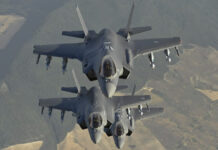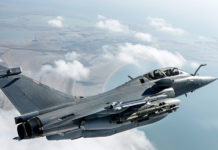Boeing has been awarded a sole-source $11.9 Billion indefinite-delivery/indefinite-quantity (IDIQ) contract to support the fleet of B-52H bombers operated by the U.S. Air Force for the next eight years. The contract provides for the all acquisition and sustainment activities needed to support the aircraft and its systems, through their life extension and modernization. The award sets the framework for the program with individual orders to be awarded as required.
The B-52 is a long-range, heavy bomber that can perform a variety of missions. The bomber is capable of flying at high subsonic speeds at altitudes up to 50,000 feet (15,166.6 meters). It can carry nuclear or precision guided conventional ordnance with worldwide precision navigation capability.
In a conventional conflict, the B-52 can perform strategic attack, close-air support, air interdiction, offensive counter-air and maritime operations. For example, during Desert Storm in 1991, B-52s delivered 40 percent of all the weapons dropped by coalition forces. It is highly effective when used for ocean surveillance, and can assist the U.S. Navy in anti-ship and mine-laying operations. Two B-52s, in two hours, can monitor 140,000 square miles (364,000 square kilometers) of ocean surface. The aircraft has been equipped with heavy stores adapter beams for carrying 2,000 pound munitions, and a full array of advance weapons currently under development. All B-52s can be equipped for precision attack carrying two electro-optical viewing sensors, a forward-looking infrared and advanced targeting pods to augment targeting, battle assessment, and flight safety, thus further improving its combat ability. Pilots wear night vision goggles to enhance their vision during night operations. Night vision goggles provide greater safety during night operations by increasing the pilot’s ability to visually clear terrain, avoid enemy radar and see other aircraft in a lights-out environment.
The B-52A first flew in 1954, and the B model entered service in 1955. A total of 744 B-52s were built with the last, a B-52H, delivered in October 1962. The first of 102 B-52H’s was delivered to Strategic Air Command in May 1961. The H model can carry up to 20 air launched cruise missiles. In addition, it can carry the conventional cruise missile that was launched in several contingencies during the 1990s, starting with Operation Desert Storm and culminating in the early 2000s with Operation Iraqi Freedom, and Operation Enduring Freedom in Afghanistan.
Only the H model is still in the Air Force inventory and is assigned to the 5th Bomb Wing at Minot AFB, N.D. and the 2nd Bomb Wing at Barksdale AFB, La., which fall under Air Force Global Strike Command. The aircraft is also assigned to the Air Force Reserve Command’s 917th Wing at Barksdale.
Related posts:




















